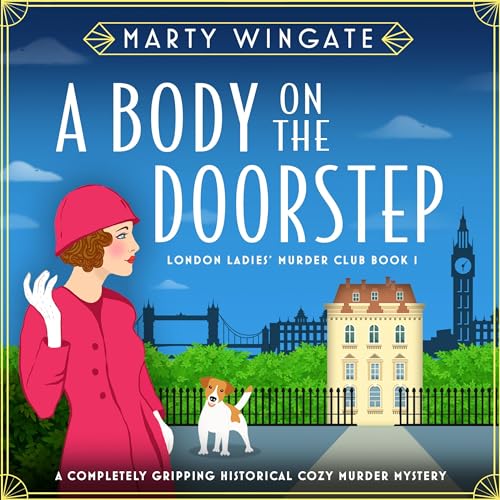 A Body on the Doorstep (London Ladies' Murder Club, #1) by Marty Wingate
A Body on the Doorstep (London Ladies' Murder Club, #1) by Marty Wingate Narrator: Naomi Frederick
Format: audiobook, eARC
Source: supplied by publisher via NetGalley
Formats available: paperback, ebook, audiobook
Genres: cozy mystery, historical mystery
Series: London Ladies' Murder Club #1
Pages: 288
Length: 9 hours and 3 minutes
Published by Bookouture on January 11, 2024
Purchasing Info: Author's Website, Publisher's Website, Amazon, Barnes & Noble, Bookshop.org, Better World Books
Goodreads
Fiercely independent Mabel Canning can’t wait to begin working for the Useful Women’s Agency. But when she discovers a body on her client’s doorstep, it’s time to add solving murders to her job description…
London, 1921: Mabel Canning is proud to be a modern woman working for the Useful Women’s Agency, carrying out tasks for gentlewomen from flower arranging to washing muddy dogs. But when she answers the door for wealthy widow Rosalind Despard, she almost chokes on her cucumber sandwich when she finds a soldier’s body on the doorstep.
As she offers tea to the policemen of Scotland Yard, Mabel can’t resist getting drawn into the investigation. Who was the mysterious dead man? And why was he holding a letter for Rosalind, written by her husband on the day he disappeared?
As Mabel hunts for clues, she joins forces with Rosalind’s handsome brother, former detective Park Winstone, and his adorable terrier, Gladys. But when Mabel suspects she is being followed, the detective duo know that time is running out before the killer strikes again.
As she investigates, Mabel discovers dusty old photographs that help her reveal the soldier’s true identity. But as she gets closer to uncovering the young man’s murderer, she knows she’s also one step closer to danger... Can she outsmart the killer and save Park and Rosalind before they also turn up dead as doornails?
A totally unputdownable and utterly charming Golden Age cozy mystery from USA Today bestselling author Marty Wingate. Perfect for fans of Agatha Christie, Richard Osman, Verity Bright and T.E. Kinsey.
My Review:
Miss Mabel Canning has arrived in London in 1921 after FINALLY managing to convince her father that it was no longer scandalous for an unmarried woman to live on her own and support herself in the big city. She’s also running away from her whole village’s firmly held belief that she should marry the local vicar – who is also her best friend’s widower after the ravages of the Spanish Flu epidemic.
Mabel has always dreamed of going to London and living on her own, and she sees poor, dear Ronald as a brother and absolutely NOT a potential spouse. In her mid-30s, Mabel isn’t even certain she wants one of those. She’s certain she doesn’t want any of the available men back home in Peasmarch.
We meet her on her first assignment for the Useful Women’s Agency. She’s been tasked with helping newly declared widow Rosalind Despard at the wake for her late and much lamented husband. But Rosalind isn’t even certain that her husband Guy is actually dead. He’s been missing for seven years and has been declared legally dead so that his business affairs can be taken care of. It’s all about closure – a closure that Rosalind isn’t sure she’s either ready or even eligible for.
So it’s a very strange wake, under rather unusual circumstances. Circumstances that only get stranger and even more unusual when a dead man thumps into the front door with a seven-year-old letter from Guy Despard in his pocket.
No one knows who the dead man is. No one knows what the letter has only turned up seven years after Guy’s disappearance. No one is entirely certain whether the letter is real or merely an elaborate hoax.
But the dead body is certainly real enough to bring the police to the house and open up all the questions and insinuations that Rosaline Despard has been dealing with all these years.
This is certainly not closure, not for Rosalind and not for any of her friends and family. And not for Miss Mabel Canning, who has befriended the widow and is determined to help her get that closure – one way or another – while doing her best to keep her own body and soul together along the way.
Escape Rating A-: This was lovely, very much a case of the right book at the right time, as I’ve been in a bit of a murder-y mood this week – actually this whole entire year so far.
From the beginning, Mabel Canning’s situation at the Useful Women’s Agency reminded me of something, and it’s a something that very much fits. The ‘Golden Age’ detective series about Lord Peter Wimsey, written by Dorothy Sayers, is also set in the 1920s, and the world has some of the same feel even if Mabel is seeing it from much more towards the middle of the social strata.
But during the Wimsey series, Lord Peter funds an agency for independent women, very much like the Useful Women’s Agency. He hires Miss Katharine Climpson’s agency to investigate situations in various cases where women will have entry and he does not, much like Mabel Canning uses the Useful Women’s Agency to get herself involved in a murder investigation.
Unlike Miss Climpson, Miss Kerr and the Useful Women’s Agency really existed – without Miss Canning’s particular specialty – because there was a need for independent women to make their own livings after World War I followed by the flu epidemic wiped out much of the generation of men they would otherwise have married.
The mystery in The Body on the Doorstep is quite nefarious, multi-layered and much closer to home than anyone imagined at its beginning. Well, not the police as they ALWAYS assumed that the wife did it. An erroneous assumption, of course, otherwise we wouldn’t have a mystery on our hands.
The story is cozy without being twee, and its setting in London as seen through the eyes of a woman on the verge of ‘middle-age’ gives her perspective a combination of freshness and maturity at the same time.
There are plenty of murders, and they are often all too gruesome, and yet the details are smudged just enough that the reader ‘gets’ the gruesomeness without being bathed in the blood – so to speak.
But the story works well because we’re following Mabel Canning, and her opening herself to the city and all its possibilities for independence and purpose makes her interesting to follow. We empathize with her every bit as much as she empathizes with the characters who become caught up by the ever expanding tendrils of the murder and its cover up.
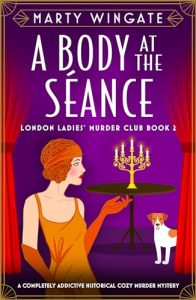 I listened to this one for about half its length, and the narrator gave Mabel just the right voice for her inner thoughts and outer expressions. But I got so caught up in the mystery itself that I had to see whodunnit and switched to text because it’s a)faster and b) a whole lot easier to thumb to the end. Although I resisted that temptation by simply finishing in one sitting.
I listened to this one for about half its length, and the narrator gave Mabel just the right voice for her inner thoughts and outer expressions. But I got so caught up in the mystery itself that I had to see whodunnit and switched to text because it’s a)faster and b) a whole lot easier to thumb to the end. Although I resisted that temptation by simply finishing in one sitting.
I liked Mabel, I enjoyed her two steps forward, one step back, looking over her shoulder investigation through friendship and a sincere desire to help, and am happy to say that there are two more books in this series – at least!
Particularly because there’s a hint of a possibility of romance for Mabel in this first book, and I’m hoping that we’ll learn whether they will or they won’t in A Body at the Seance, which is out now, and A Body at the Dance Hall, coming in April.

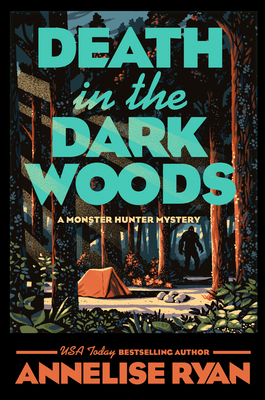 Death in the Dark Woods (Monster Hunter Mystery #2) by
Death in the Dark Woods (Monster Hunter Mystery #2) by 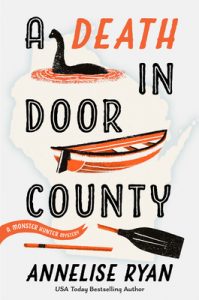 Escape Rating A-: So far, at least, the
Escape Rating A-: So far, at least, the 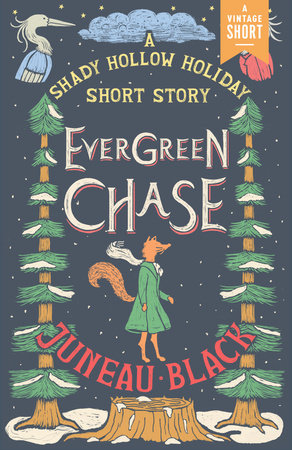 Evergreen Chase: A Shady Hollow Mystery Short Story by
Evergreen Chase: A Shady Hollow Mystery Short Story by 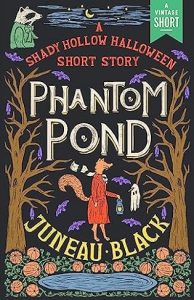 This is explicitly not a Christmas story, just as
This is explicitly not a Christmas story, just as  That the town pulls together to celebrate the solstice with or without the tree is all part of the series’ charm. That they have their own solstice miracle just adds to the sweetness of both the story and the holiday season – both theirs and ours.
That the town pulls together to celebrate the solstice with or without the tree is all part of the series’ charm. That they have their own solstice miracle just adds to the sweetness of both the story and the holiday season – both theirs and ours. Twilight Falls (Shady Hollow, #4) by
Twilight Falls (Shady Hollow, #4) by 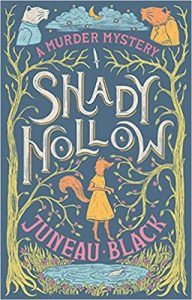 It was also a delightful twisty little mystery, as the
It was also a delightful twisty little mystery, as the 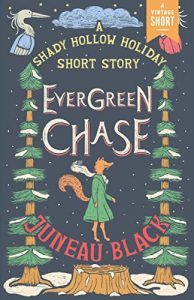 That their arguments seem to have found a violent resolution is just as typical for the cozy mystery genre as the rest of the story. And it’s all just a lovely and comforting read all the way around. Just like all cozy mystery series, if you’ve fallen for the regular ‘gang’ and the place they live – and I have – then it’s always wonderful to come back for a visit. And it certainly was this time around.
That their arguments seem to have found a violent resolution is just as typical for the cozy mystery genre as the rest of the story. And it’s all just a lovely and comforting read all the way around. Just like all cozy mystery series, if you’ve fallen for the regular ‘gang’ and the place they live – and I have – then it’s always wonderful to come back for a visit. And it certainly was this time around.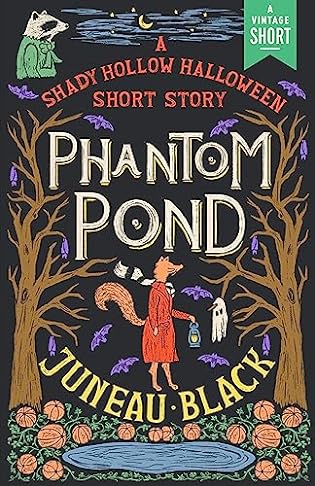 Phantom Pond: A Shady Hollow Halloween Short Story by
Phantom Pond: A Shady Hollow Halloween Short Story by 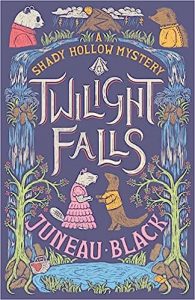 When one of the little Mischief Night revelers doesn’t turn up the following morning, not at home, not at her best friend’s house, not anywhere – and a vaguely threatening missive from Creeping Juniper is found in her place – everyone fears the worst.
When one of the little Mischief Night revelers doesn’t turn up the following morning, not at home, not at her best friend’s house, not anywhere – and a vaguely threatening missive from Creeping Juniper is found in her place – everyone fears the worst. Then it turns the whole scenario on its head, one more time, into the best kind of cathartic happy ending about mysterious misunderstandings until all their, and our, fears are laid peacefully to rest but no character is left under a ‘Rest in Peace’ marker.
Then it turns the whole scenario on its head, one more time, into the best kind of cathartic happy ending about mysterious misunderstandings until all their, and our, fears are laid peacefully to rest but no character is left under a ‘Rest in Peace’ marker. Hiss Me Deadly (Cat in the Stacks Mystery) by
Hiss Me Deadly (Cat in the Stacks Mystery) by 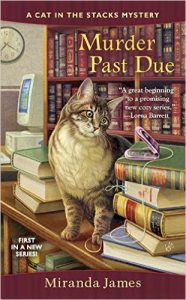 Escape Rating B: I’ve missed Diesel, although now I have Tuna and he’s about half a Diesel in size, intelligence and purr volume. Diesel is always the best part of the
Escape Rating B: I’ve missed Diesel, although now I have Tuna and he’s about half a Diesel in size, intelligence and purr volume. Diesel is always the best part of the  Big Trouble on Sullivan's Island (Carolina Tales Book 1) by
Big Trouble on Sullivan's Island (Carolina Tales Book 1) by 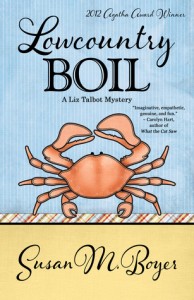 Escape Rating A-: I picked this up because I love the author’s
Escape Rating A-: I picked this up because I love the author’s 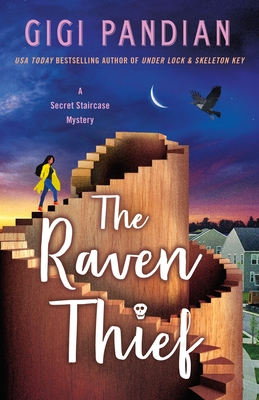 The Raven Thief (Secret Staircase Mystery, #2) by
The Raven Thief (Secret Staircase Mystery, #2) by 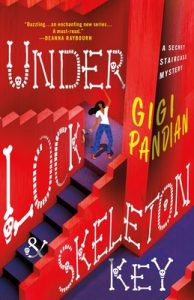 Leaving Tempest and her friends in the same position they found themselves in
Leaving Tempest and her friends in the same position they found themselves in 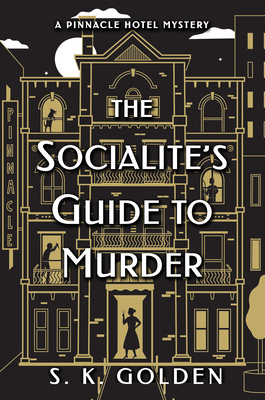 The Socialite's Guide to Murder by
The Socialite's Guide to Murder by 

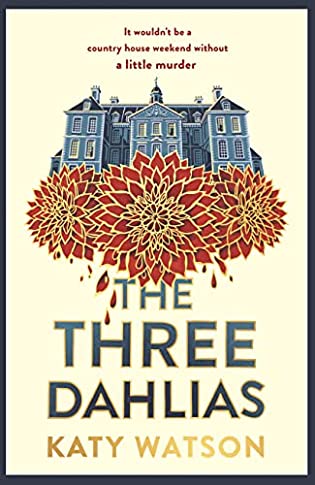 The Three Dahlias (Dahlia Lively #1) by
The Three Dahlias (Dahlia Lively #1) by